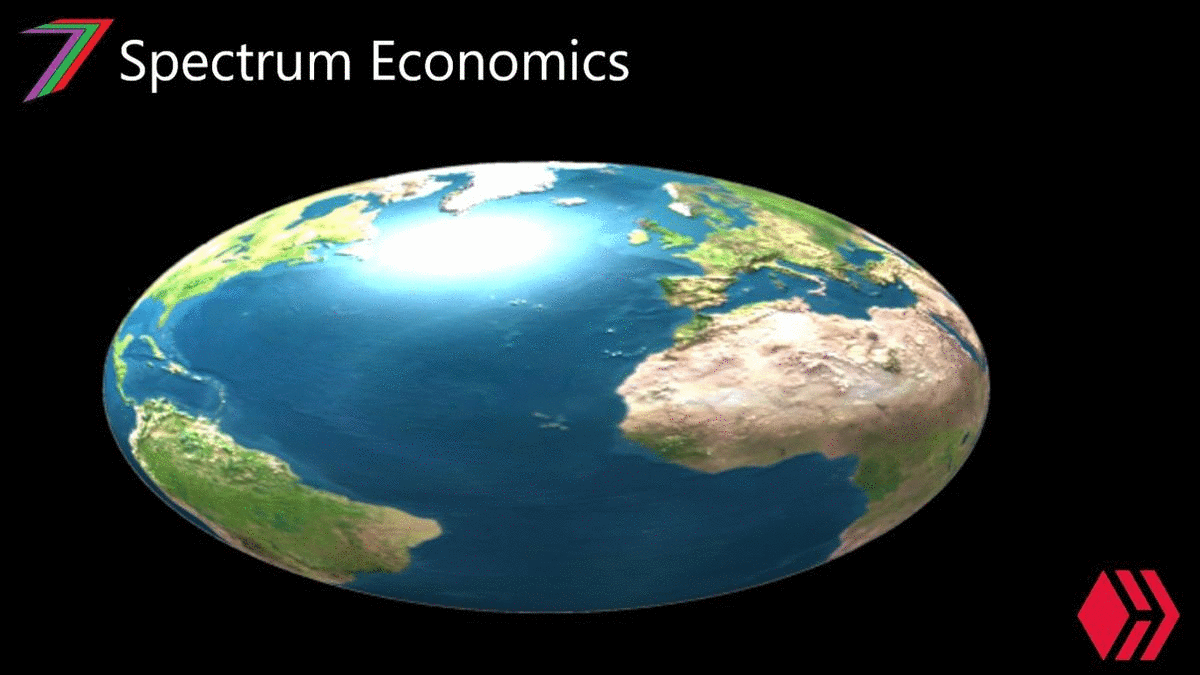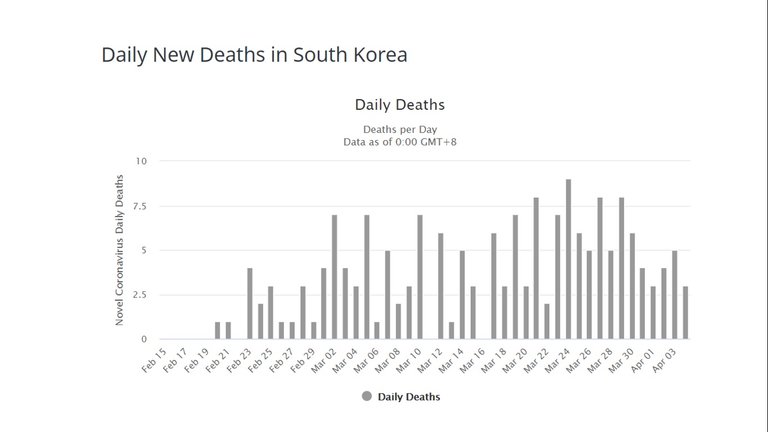Hi Everyone,

Considering the serious threat that Covid-19 poses to our physical health as well as our social, financial and economic health, I am putting together a series of posts that will investigate the impact this virus is having and will likely to have in the short, medium, and long run. I am not a medical doctor or a scientist. I am an economist. I will be using my economics background to analyse the expected impact this virus will have on our lives. This series of posts will cover the following.
- Identifying the threat
- The fragility of the world we live in
- Impact on prices and quantity of goods and services in absence of Government Intervention
- Actions taken or could be taken by Governments
- Possible Impact of Government intervention on the economy
- The social costs of Covid-19 and responses to it
- Winners and losers from the outbreak
- The road ahead (positive vs. negative scenarios) and what we could learn
In Part 2 of this series, I will be discussing why I believe the economy is vulnerable to events such as pandemics, which can cause large parts of the economy to shutdown for prolonged periods.
Signs of fragility
We live in a world that is in a constant state of motion. Most people spend what they earn. Many people spend a large proportion of their weekly waking hours engaged in work or commuting to work. Covid-19 has disrupted this constant state of motion. Some people are not going to work because they are suffering from Covid-19 or have some of the symptoms. Other people are not going to work to avoid unnecessary contact or have been ordered to stay home. For many countries, the only people that continue to work are those people that are performing an essential service.
Prior to the strict lockdowns, many western countries adopted the approach of issuing warnings and advice rather than direct instruction to isolate. It appeared many people did not follow these instructions. It is possible many people did not take these warnings seriously. It is also possible that many people believed they could not afford to self-isolate.
There are several possible reasons why people may not have taken the advice and recommendations of the Government seriously. These reasons could include:
- People who are not in a high-risk group are acting selfish and inconsiderate.
- People do not understand the nature of the current crisis or the instructions they have been given.
- People do not trust the advice given by the Government and their experts.
- People do not believe Covid-19 is a serious problem.
These reasons stem from culture, lack of good communication, and lack of trust. Culture could be driving selfish and inconsiderate behaviour. Lack of good or consistent communication could have led to confusion. Lack of trust could have damaged the creditability of the advice given.
There are also people that understood the advice and believe the problem is serious but choose to continue working because the loss of income would put them in financial hardship. They likely considered the cost of not working greater than the potential cost of contracting the virus.
If we assume the advice regarding social distancing is accurate, the nature of the relationship between the people and Government and the required continuous motion of the economy has contributed to the spread of the virus. As the health problem becomes more serious so do the social, financial and economic problems as the extent of measures used by Governments will increase and be in place for longer. This will give Governments greater control thus further increasing the distrust people have for them.
Why are we so vulnerable to a pandemic?
The first element of the problem is our physical health. If a highly contagious virus that we have little or no immunity against is unleashed on the world, we will face a serious health problem regardless of the systems we have in place. However, a good system would be considerably more effective at reducing the impact of this virus. Many systems appear to involve Governments making decisions based on a few select scientists. These scientists may or may not be representative of the scientific community in the fields of virology or epidemiology. This is evident as different countries have adopted different strategies and at different stages of the pandemic. Many of the countries affected earliest have had some success at slowing and containing the spread of the virus. The countries that have experienced the outbreak later have struggled to replicate that success. The Governments and scientific experts of these countries do not appear to be learning from the countries that combated the virus before them.
South Korea case study

Source: worldometers.info, accessed 05/04/2020
South Korea have been one of the most successful countries at slowing the spread of Covid-19. One of the reasons for their success is because they learnt from a previous pandemic (Middle Eastern Respiratory Syndrome aka MERS), which occurred in 2015. South Korea struggled to contain MERS for several reasons, these reasons include.
- They were slow to respond to the MERS outbreak
- They were unable to track the virus
- Patients were placed too close together in hospitals.
- They were unable to successful segregate infected patients from uninfected people.
- They hesitated to react because of fear of the economic implications.
South Korea’s approach to Covid-19 aimed to address the problems they faced with the MERS outbreak. As soon as news from China was released regarding Covid-19, South Korea immediately starting screening all travellers entering South Korea from Wuhan. Visitors that displayed symptoms such as fever were quarantined. South Korea adopted the strategy of tracing prior movements of all those that became infected with Covid-19 to determine where they had been and who they had been in contact with. Companies developed apps that were used to inform the public where infected people had been so that they could avoid these places. South Korea also made an effort to test as many people for Covid-19 as possible. By 26 February, they had tested 46,127 people, which was considerably higher than other countries that had their first cases at a similar time. The spikes in cases that South Korea have experienced were linked to large religious gatherings. However, the approach they have adopted enabled these outbreaks to be traced to their origins and this has helped reduce the extent of the spread. (See The Bulletin for the full story).
Another strategy South Korea has adopted is the mass distribution of face masks amongst the population. According to ABC News, at the time the article was published, the Government were distributing 2.4 Million face masks to 24,000 pharmacies every day.
Potential problem with the South Korean approach
A key part of the South Korean approach involved tracing where infected people had been and whom they interacted with prior to testing positive. Such a step could be considered very invasive and could be used or adopted to monitor anyone the Government chooses. However, this approach does not necessarily need to be ignored as the invasive nature could be avoided. Those identified with Covid-19 could be assigned an anonymous identifier. The activities could then be placed or recorded on a public database. This database does need to be run by the Government. A decentralised blockchain could be established to store this information.
South Korea may be doing a good job of containing the spread of the virus but that does not mean their approach should be completely mimicked. Instead, their success should be built on and modified to suit the needs of the adopting communities or countries.
Factors likely to affect the cost of social distancing
Social distancing is designed to slow and reduce the spread of Covid-19 but it comes at other costs. These costs vary depending on:
- how long social distancing is required
- the nature of social distancing strategies
- the importance of close interaction within communities
- community culture
- level of cooperation built in society
- the ability to operate remotely
- the extent of spare capacity
- the extent of reserves of resources
- the ability to adapt to new circumstances
The duration of social distancing will depend on the seriousness of the outbreak and the effectiveness of the measures put in place. Different countries have put different measures in place. Most western countries began by advising people to not gather in large numbers or go to places that involves close social contact such as restaurants, pubs, cinemas and shopping malls. As the pandemic worsened, this advice turned to instruction that required people to stay at home and self-isolate. This approach has brought many of these countries to a standstill. The social, economic, and financial cost of shutting down cities is high as economies are built around continuous motion. The South Korean approach has a smaller cost as it does not involve a complete shutdown but rather a more strategic shutdown relating to those that have encounter the virus.
Different cultures and societies have different levels of personal interaction. The greater the level of social interaction embedded in a culture, the more difficult social distancing becomes. For cultures and societies that interact predominantly online, the cost of social isolation will be reduced as the level of change and disruption is less. The extent of cooperation built into society will also make a difference to how well people will be able to cope during social distancing. Working together is important as it helps people deal with isolation as well as come up with solutions to making life easier. Through cooperation, the people that are most vulnerable to the virus as well as the measures implemented can be protected.
Businesses could greatly benefit from having the capability to operate online. Technology enables most communication to be done remotely. Technology enables people to purchase most items online. Many services can also be offered online as well. The businesses that will suffer greatly are those related to services that require people to be present. Such services include live entertainment, tourism, travel, food and drink, and gyms (USA Today). Social distancing also affects production of goods. Many manufacturing companies require workers to be present at plants and factories. Required social distancing measures may hinder or even prevent production of many types of goods.
The amount of spare capacity also plays a role in helping society adapt during the pandemic. This extra capacity could come in the form of people who could work more hours to meet the growing needs in particular areas. Many countries lack this extra capacity as the workforce with necessary skills are currently operating close to their maximum capacity. Access to additional resources such as medical equipment, buildings, machinery, and food is necessary to prevent shortages when there are spikes in demand. The capability and capacity to transport these resources to the right places at the right time is also required.
The ability to adapt to new circumstances will also play a key role in how well people will cope. This applies to individuals, groups and businesses. Even after social distancing ends, things are likely to be different from what they were prior to the pandemic. The ability to adapt will determine how quickly a society can regain functionality. Societies that are good at adapting to change could regain functionality quickly and come out of this pandemic stronger than they were before. Likewise, societies that are unable or unwilling to adapt may take a long time to regain functionality. There is also the possibility that some societies will adapt in a regressive manner and become considerably worse because of these events.
Final Thoughts
I believe the Covid-19 pandemic has exposed many of the weaknesses in our economic and societal systems. I believe these weaknesses can be summarised as:
- lack of respect and trust for leaders
- an economic system that cannot easily be put on pause
- lack of transfer of knowledge and learning between countries and communities
- centralised control of response with limited consultancy and collaboration
- lack of capacity and resources to handle serious crises
- inability to adapt to changes
The exposure of these weaknesses provides us with an opportunity to address them. In my upcoming posts in this series, I will explore the social, finance, economic impacts of the virus. These posts, will consider what could happen without Government intervention as well as what could happen with various types of Government intervention.
Other relevant Content
I have discussed many of the problems in our current systems in several other posts. Below are the links to the posts I believe most relevant to this current pandemic
Less jobs vs less working hours – Further discussion about efficiency and technology
Quality of Life as Quality of Time
Social Economic Utility Analysis (working title) Algorithms
Raise your hand if you live in a Democracy
Could democracy succeed if it was given a chance?
Trade, money, debt, waste, and power
Below are the posts in a series I am currently working on. These posts investigate key areas in society and explain how a prevent, solve, manage approach can be used to guide these key areas.
Health - Prevent, Cure, or Treat
Crime – Prevent, Fix, or Manage
Housing – Prevent, Solve, or Manage
Education – Prevent, Solve, or Manage
More posts

If you want to read any of my other posts, you can click on the links below. These links will lead you to posts containing my collection of works. These posts will be updated frequently.
Future of Social Media




